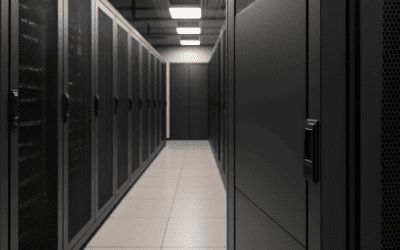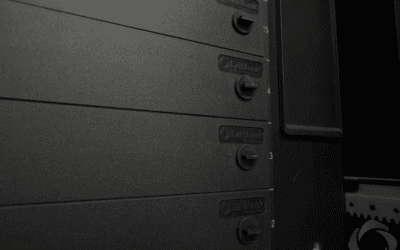As the world continues to turn digital, the data center industry continues to grow and many data centers are being built.
However, building a data center can be very costly.
The initial investment can range depending on the size and scope of the project. Estimates put data center build costs at between $600 to $1,000 per square foot or $7 million to $12 million per megawatt of IT load.
Despite the high upfront and ongoing costs, businesses continue to invest in data centers due to the many benefits they offer.
So let’s get into how much it costs to build a data center, including building, equipping the facility with power and cooling infrastructure, as well as some more affordable options to start from scratch.
The data center building
First – the costs of the building.
Data centers come in various shapes and sizes, from small facilities that occupy a few thousand square feet to multi-story buildings that span hundreds of thousands of square feet.
The cost of building a data center depends heavily on this size and features.
Size
Smaller data centers can be built for around $10 million, while larger ones can cost upwards of $2 billion. The most expensive data center ever built is said to be the new Apple Campus 2, which cost an estimated $5 billion.
A data center should not be built too big or too small.
It is good to start with the minimum required size for cost savings. However, data centers should be scalable to handle the ever-growing needs of businesses.
Scalable data centers
A scalable data center space can easily accommodate an increase in the number of servers and other hardware required to keep things running smoothly. This can be designed from the beginning to allow for future growth, or it can be retrofitted later on if needed. This may add some extra upfront costs but result in savings in the long run.
Location
Location also greatly affects the cost of building a data center.
For example, construction costs in Silicon Valley are much higher than in other parts of the country. A data center location must have great access to power and network connections which may drive up costs.
The cost of real estate can be a major factor in deciding where to build a data center. In some cases, businesses may need to lease or purchase property specifically for their data center needs. This can be expensive, but there are some tax incentives available for data center development.
What infrastructure is needed when building data centers?
In addition to the cost of the building itself, businesses must also consider the cost of equipping the data center with power and cooling infrastructure.
All of this equipment is necessary to keep servers and other hardware running smoothly, so it’s important to budget for it when planning a data center buildout to get the greatest cost saving benefits.
Electrical systems
The electrical systems, or network infrastructure are estimated to be around 40-45% of the total cost of a data center.
These systems include:
- Electrical backup generator
- Batteries
- Power distribution unit (PDU)
- Uninterruptible power supply (UPS)
- Switchgear/transformers
Cooling infrastructure
Cooling infrastructure roughly comprises 15-20% of the total cost of a typical data center.
This includes
- Air conditioning
- Computer room air handler
- Air cooled chillers
- Chilled water storage
- Pipes
The data center tiers and their cost
In terms of cost, another area that influences the cost is the tier. There are four tiers of data centers that are defined by the Uptime Institute.
Tier I data center
This is the most basic level and is suitable for small businesses or departments. A tier I data center has only one path for power and cooling, and likely no backup or redundant components. This is the cheapest option but has the major downside of not being able to withstand a power outage.
Tier II data center
This data center tier has most of the features of Tier I, including only one path for power and cooling but also some redundant components, including This ensures that the data center can continue to operate in the event of a cooling failure. Estimates put the cost of these data centers at about $4.5-6.5 million per megawatt.
Tier III data center
This is the most common data center tier. A Tier III data center must meet all of the requirements of a Tier II center, but must also have redundant networking infrastructure. This ensures that the data center can continue to operate in the event of a network failure. These cost around double a Tier II data center.
Tier IV data center
The highest level of certification – Tier IV data centers are designed for critical operations such as healthcare. These centers must have fully redundant everything, including power, cooling, networking and security systems. They are also subject to more rigorous testing and certification requirements and cost the most to build!
Businesses should choose the tier that best meets their needs. Depending on their size and requirements this will greatly influence the cost.
Alternatives to building a data center
While tech giants and other huge companies might consider their own private data center, an enterprise data center (a data center constructed and used by a single organization) an on-premises data center (located on the premises as the name suggests), or a single tenant data centers (a data center dedicated to a single client or company), there are more affordable options.
Colocation data center
A colocation data center is a great option for businesses that don’t have the resources or need for their own data center. This type of data center is housed in a third-party facility and businesses can lease space and equipment there
This is a very affordable option, as businesses only need to pay for the services they use with a shared cost structure. Colocation data centers also offer flexibility, as businesses can add or reduce their space and services as needed
Cloud data center
Cloud data centers are another great alternative to on-premises or enterprise data centers. They offer all of the benefits of a traditional data center, but without the cost or hassle of building and maintaining your infrastructure.
Cloud data centers are housed in secure, climate-controlled facilities, and are connected to high-speed networks for fast, reliable access. They offer a wide range of services, including cloud hosting, cloud storage, and cloud computing.
Businesses can save money and time by choosing a cloud data center instead of building their own. Cloud data centers are scalable, so businesses can grow their infrastructure as needed. And they offer flexibility and convenience, allowing businesses to access their data from anywhere at any time.
Cost to build a data center – in summary
The total cost to build a new data center can vary greatly, depending on the size and complexity of the project and range from tens of millions to even billions. Major influencing factors include the location, size and infrastructure you choose.
There are also many alternatives to building a data center, including colocation and cloud data centers which offer businesses flexibility and convenience while saving money.
For more about data centers head to our info center where we cover all there is to know about data centers from airflow management to reducing energy consumption.




